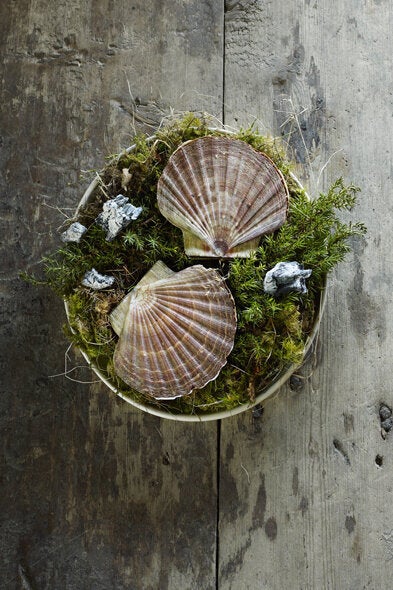
We caught up with chef Magnus Nilsson, whose book Fäviken is 'out there' to say the least.
"I made one dish which was the savoury porridge and one very simple desert based on colostrum - the first milk that any mammal gives just after giving birth."
I was nonplussed by this, as I think most would be, so he continued to explain: "It's very rich in protein. It's traditional to eat from a cow, for example in puddings so you can basically treat it like custard batter - it thickens when you heat it."
One might be forgiven for thinking that finding a mammal's first milk in your local Tesco Express might be a bit difficult, but not for Magnus: "You have to know your farmer." And that pretty much sums up his cooking style.
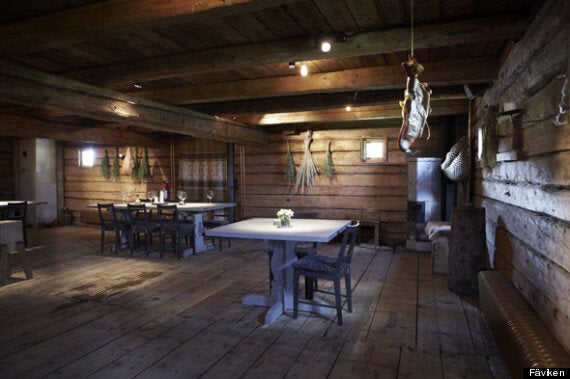
His restaurant, Fäviken Magasinet, can be found on a remote 20,000-acre hunting estate in Jämtland, near the Arctic Circle in northwestern Sweden. It only seats 14 patrons at a time and pays homage to its wild surrounds by serving up a no-choice menu of foraged, farmed, raised, preserved and hunted ingredients.
He's been compared to René Redzepi of Noma in Copenhagen, his restaurant made number 34 for the second time in a row in this year's list of the world's 50 best and he hasn't even turned 30 yet. His food has been described in turns as philosophical, hyper-local, sparse and ultra modern, but essentially it is what is by necessity in the remoteness of its surroundings: uncomplicated yet celebratory ways of letting good ingredients shine.
That's not to be confused with simple cooking though, there aren't many chefs who can convincingly magic up a plate consisting of a 'tiny slice of top blade from a retired dairy cow, dry aged for nine months, crispy reindeer lichen, fermented green gooseberries, fennel salt' with as much conviction as Magnus.
"I don't look at ingredients that way, they are ingredients. Either they are exceptional or good or poor. I don't categorise ingredients after what they are, just the quality they have."
Magnus at home
"I make ordinary food at home. people think that's it's very complicated and very fancy because you're a chef but it's not, it's like everyone else who's interested in food, I think. I make rice porridge."

This rice porridge featured in his cookbook, Fäviken, and a complex savoury version - made from pouring beef stock over the porridge through tufts of moss and decomposed birch leaves - nearly rendered TV chef and presenter James Martin speechless when Magnus made an appearance on Saturday Kitchen back in January.
"When I cook at home for dinner I usually cook something very simple because I think it defeats the purpose of inviting people to your home if you can't spend time with them. I usually just put a roast in the oven or make a meat stew."
Seasonal eating
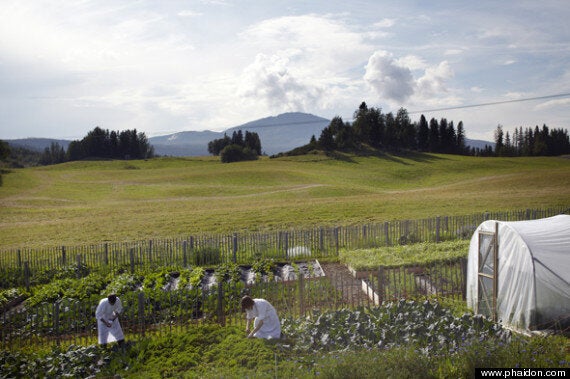
The garden at Fäviken
"I like working with vegetables. It's not a logical decision, it just makes me happy working with vegetables."
"It's the end of spring up here, there's still a lot of wild vegetables. Everything is just about to sprout in the garden so we are just starting to pick the very first things like spinach. There's still very good fish and shellfish coming in from Norway, there is goat kid in season right now and chicken."
Magnus freely admits that the recipes from his book aren't exactly aimed at home cooks, unless you're the type of cook who keeps a retired dairy cow or reindeer lichen around the house.
"I don't send out recipes for home cooking because that's not what we do. They can be inspirational anyhow."
I even asked him about substitutions in his recipes: "For a goat kid? Lamb, I guess." I asked about reindeer lichen and he laughed: "No, there is no substitute for that."
So why are we still seduced by Nordic flavours? From the meatballs and ginger biscuits in IKEA to swilling Kopparberg or, as Magnus sums it up: the pickled herring and the gravlax.
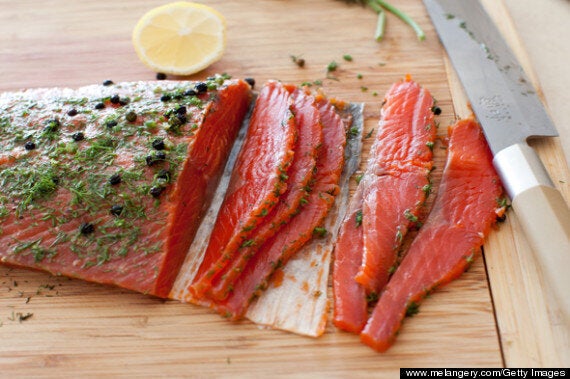
Gravlax
Relatively little is actually known about the gastronomic traditions of the icy Nordic set and this is something Magnus wants to address in his next book, or should I say his next historical epic, which will track Nordic food through 1,200 recipes and 75,000 words of narrative texts divided between travel logs and historical references.
"There's really no extensive book on Nordic cooking. There are a few recipe collections, most of them are pretty crappy and they are not covering all the aspects that would be necessary to understand the food culture and they're not necessarily tested through properly either, as I've come to realise."
"Some are them are definitely going to be usual. It's important to have all the classics, all the very iconic dishes from all the countries, even though these are perhaps not dishes that you go to cook everyday.
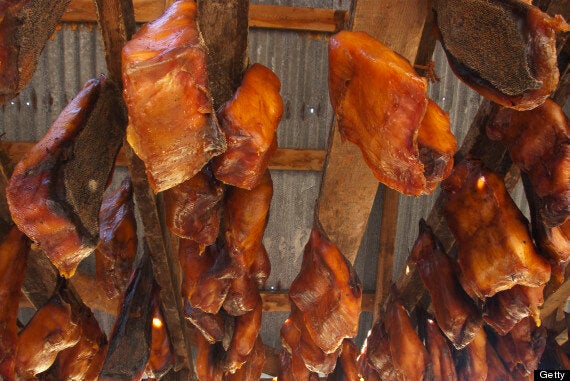
Harkal - rotten shark meat.
"It also has to be mixed up with recipes that people use in their homes all the time. If you go to Iceland and have their rotten shark, that's one of their most traditional, iconic dishes but it's not like the Icelandic people do that and eat that in their home every week, it's an old tradition that is kept alive and taken out for special occasions.
"I think that a book like that has to be connected to people. We are launching a website with a questionnaire that Nordic people can fill in about what they eat for their birthday and christmas and the most iconic dishes and beverages so hopefully a lot of people will go in there and help out."
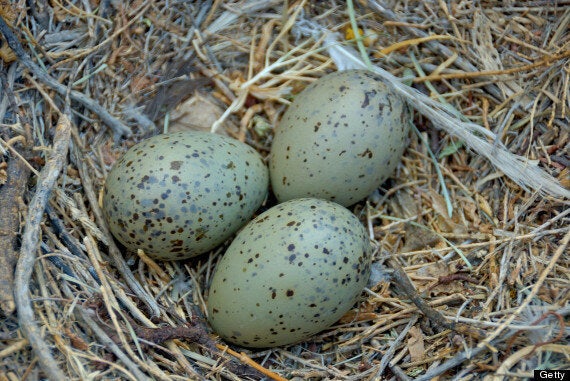
Gulls eggs
Reassuringly, even Magnus can still be surprised by what he uncovers in the wilds of the Nordic countries: "I went to Iceland and saw Razorbill eggs, this is not something you use in Sweden. They just boil them and eat them with salt, it's like your tradition with gulls eggs in the UK."
If you say so, Magnus!
Fäviken the book is available from Phaidon, priced at £35.00 and his new book is set to be published in the spring of 2015.
